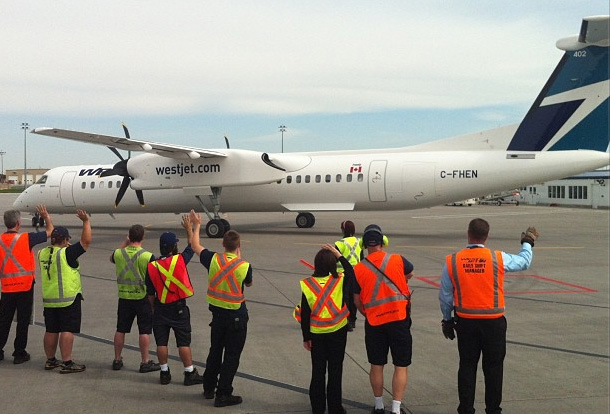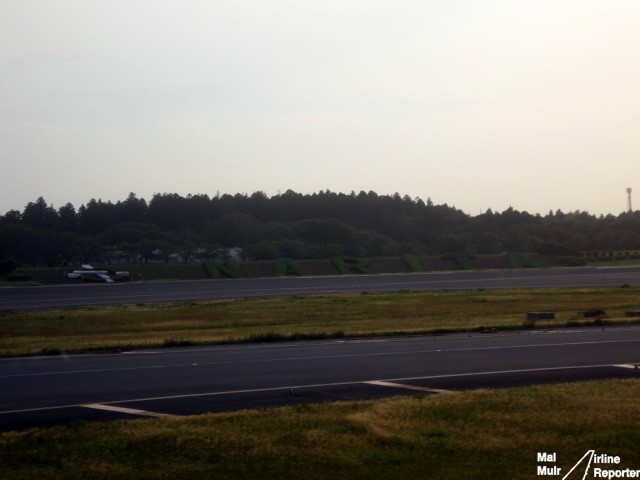
It is not hard to tell just where you are, and if the sign doesn’t help, perhaps all the ANA & JAL aircraft around are a clue – Photo: Mal Muir | AirlineReporter.com
This is the continuation of a multi-part series covering my trip from Seattle to San Jose to Narita to Hong Kong and back as a ANA Ambassador. My flight was provided by ANA, but all opinions are my own. First read: ANA Ambassador Report 1: San Jose to Tokyo on the 787 Dreamliner.
A majority of flights to Asia from the westcoast, require a connection through an intermediary stop. Cathay Pacific has their hub in Hong Kong, Asiana and Korean have their hubs at Incheon. However, four airlines have their hubs in Tokyo: Delta, United, All Nippon Airways (ANA) and Japan Airlines (JAL).
This means that on a good day you can see a variety of aircraft and flights in and out of Narita International Airport (NRT). This makes the airport not only nice for the general traveler, but also for the AvGeek. I recently was able to take a closer look at transitioning in NRT while on my way to Hong Kong (HKG).
This morning at 11:28 AM (Mountain Time), Westjet Encore‘s first passenger flight left Calgary, Alberta (YYC) for Nanaimo, BC (YCD). The flight was operated by one of the two 78-seat Bombardier Q400s that Westjet Encore has received from their initial order of 20 planes. The other initial destinations for this soon-to-be-growing regional airline are Fort St. John, Victoria and Vancouver, BC, and Saskatoon, Saskatchewan. Brandon, Manitoba will be added in early September. They’ll continue to grow as another 5 Q400s come into the fleet before year-end.
It’s clear that Westjet has positioned their new airline to try and break the monopoly that Air Canada Express (Jazz Aviation/Chorus Aviation) has enjoyed over the years in many smaller Canadian communities. In fact, Ferio Puglieses, the new airline’s President, is pretty blunt about their objectives: “WestJet Encore is here to liberate smaller communities from the high cost of regional air travel while continuing to provide every guest with our award winning culture of care.”
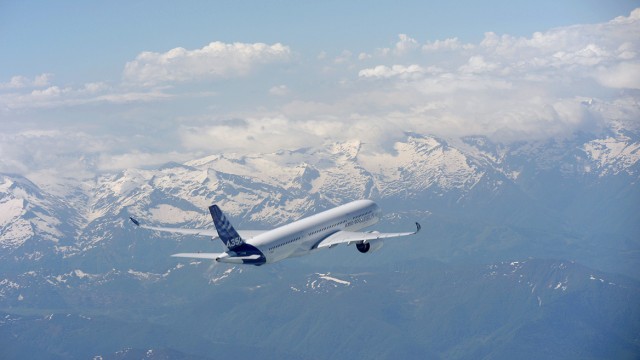
The first flight of the Airbus A350-900. Photo from Airbus.
There is quite a bit that has to happen to make sure a new aircraft type has a successful first fight. While most of us were able to enjoy the first lift off from the outside, Airbus has shared quite a few of the details on what it was like to experience the first flight from the inside. Airbus uses photos, video and narrative to paint a detailed picture on the A350’s first flight and we wanted to make sure you do not miss it.
Learn and see more: A350 XWB Magazine: #03 ’œThe Time is Here: The Time to Fly’
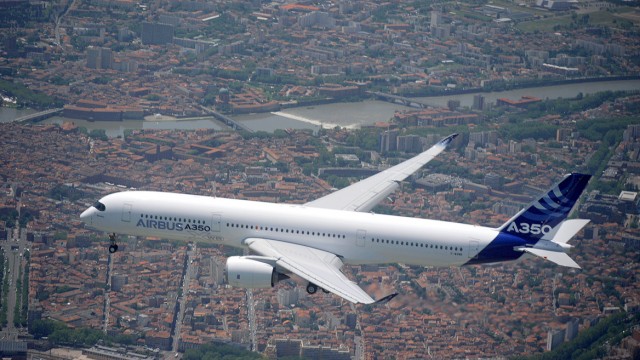
The Airbus A350 (MSN001) during its first flight. Image from Airbus.
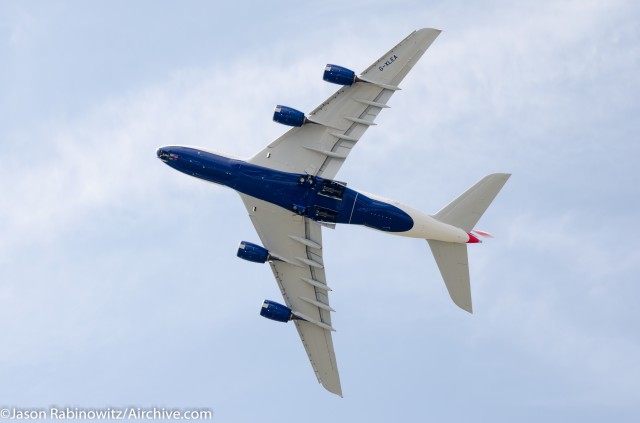
British Airways Airbus A380 at the Paris Air Show. Image from Jason Rabinowitz / Airchive.com.
Even though the business phase of the Paris Air Show wound down on Thursday, orders and announcements continued at a rapid pace. Airbus and Boeing had a great PAS13 ’“ Airbus had 466 orders and commitments for commercial aircraft and Boeing had 442 total. Here’s some of what happened since our last update:
- Ryanair converted previous commitments into a huge order for 175 Boeing 737-800s, adding to the 303 -800s that Ryanair flies. As well, they might be placing an order for the 737 MAX by year-end. Ryanair CEO Ryan O’Leary said that ’œit wouldn’t be worth doing’ if the order wasn’t for at least 200 aircraft.
- Boeing announced that the 737 MAX’s Entry into Service (EIS) will be the 3rd quarter of 2017, about 6 months earlier than previously expected. Among other details released about the 737 MAX, the flight deck will have 4 large ’œlandscape’ displays, and the nose will be 8 inches higher to accommodate the larger fan diameter of it’s advanced LEAP-1B engines.
- Leasing and finance company, CIT Aerospace, ordered 30 737 MAX 8s.
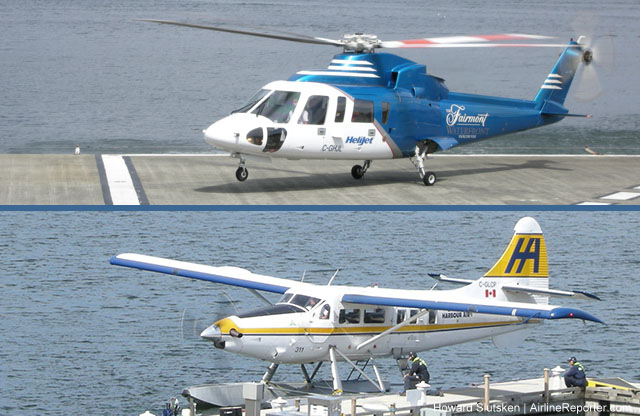
Helijet Sikorsky S-76 & Harbour Air DHC-3 Turbine Otter
In the early 2000s I lived in beautiful Victoria, British Columbia, about as far west in Canada as you can be without falling into the Pacific Ocean. Victoria is at the most southern tip of 460 km (290 mile) long Vancouver Island, about even with Whidbey Island, Washington. Business would take me to downtown Vancouver regularly, a straight-line distance of about 110 km (70 miles). I could drive to the ferry terminal, wait, have a nice 90 minute ferry ride, then drive in traffic to downtown Vancouver. Total trip time? 3 hours, if traffic was light. Cost? About CA$70 each way. But I could also fly harbour to harbour in about 30 minutes. As a fellow AvGeek, which one do you think I enjoyed more??
There are 2 regular airline services flying between Victoria’s and Vancouver’s harbours. Both harbours are Transport Canada certified airports, with designated water ’œrunways’. You can fly fixed-wing on Harbour Air’s 14 passenger DeHavilland Canada DHC-3 Turbine Otters or 18-seat DHC-6 Twin Otters. Or you can take a helicopter – Helijet flies 12-seat, twin-engine, Sikorsky S-76s or 4-seat Bell 206L LongRangers. Which way to go? Let’s have a look at the two airlines.

